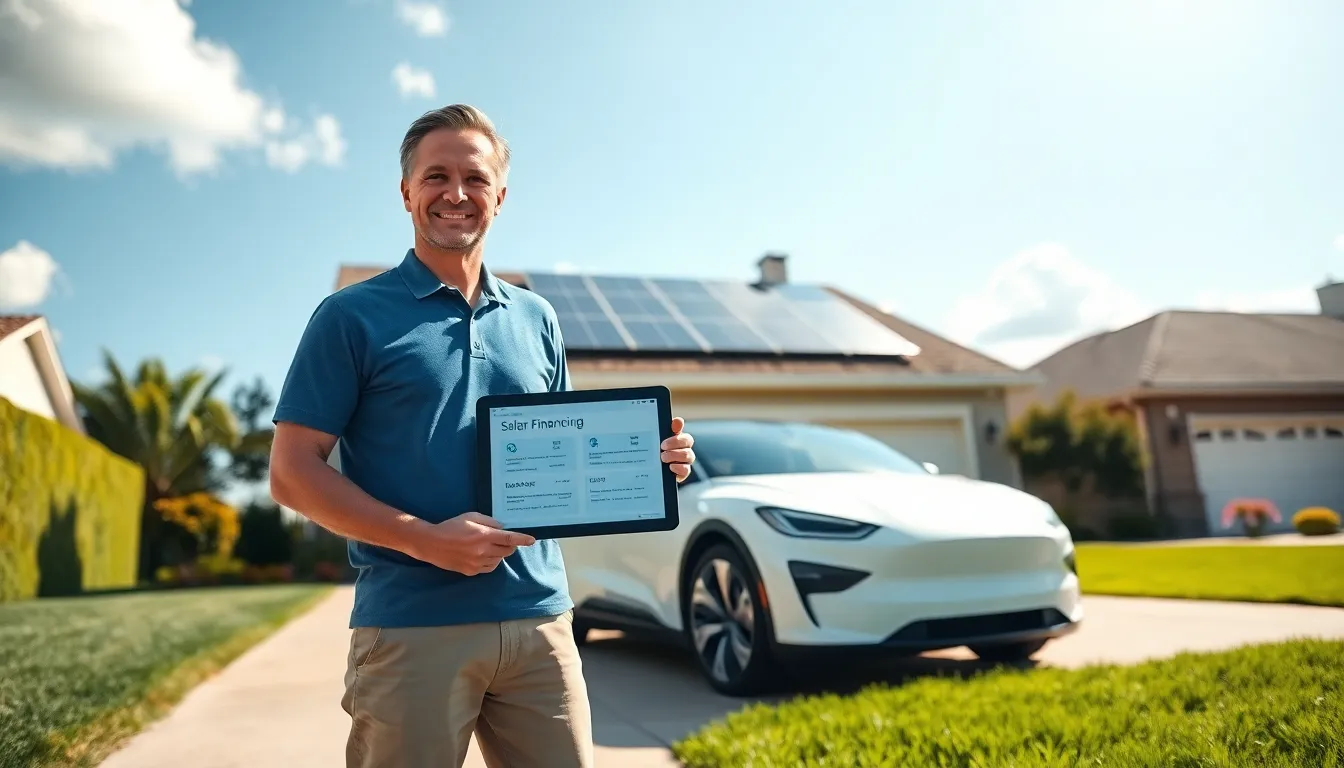As solar energy gains traction as a sustainable and cost-effective energy source, understanding the financial aspects of solar home investments becomes essential. From various financing options to government incentives, navigating this landscape can be daunting. The LotsOfPower Files ‘Finance Solar Home’ ebook offers a comprehensive guide, illuminating the path toward financial clarity in solar investments. This article breaks down the key insights highlighted in the ebook, providing homeowners with the knowledge they need to make informed decisions about solar energy financing.
Table of Contents
ToggleUnderstanding Solar Home Financing Options

Solar home financing revolves around a few key options that allow homeowners to harness the benefits of solar energy without facing prohibitive upfront costs. When exploring these options, it’s crucial to understand the different types of financing available.
Types of Solar Financing Available
The two primary types of financing for solar systems are cash purchases and financing agreements.
- Cash Purchase: This option involves paying the full price of the solar system upfront. While it requires a significant initial investment, homeowners can benefit from immediate energy savings and potential tax credits.
- Solar Loans: Homeowners can opt for solar loans, which allow them to finance the purchase of a system. Typically secured against the home, these loans can be obtained through various lenders.
- Power Purchase Agreements (PPAs): In a PPA, a solar provider installs a system at no upfront cost. The homeowner pays for the power generated at a predetermined rate, usually lower than their local utility rate.
- Leases: Similar to PPAs, leases enable homeowners to install solar with no initial payment. But, they pay a fixed monthly fee for using the solar system.
Leasing vs. Purchasing Solar Systems
Deciding whether to lease or purchase a solar system hinges on various factors, including financial goals, energy consumption, and personal preferences.
- Leasing typically offers lower upfront costs and immediate access to solar energy. But, it may carry higher long-term costs due to fixed payments without ownership benefits.
- Purchasing a system allows homeowners to take full ownership and benefit from long-term savings and tax incentives. Yet, it requires a substantial upfront investment which may not be feasible for all homeowners.
Government Incentives and Rebates
The financial viability of solar energy systems is significantly bolstered by various government incentives and rebates designed to encourage renewable energy adoption. Homeowners should be well-acquainted with these offerings to optimize their investments.
- Federal Tax Credit (ITC): The Federal Investment Tax Credit enables homeowners to deduct a substantial portion of their solar system costs from their federal tax. As of recent updates, this incentive can cover 30% of the total installation cost.
- State Incentives: Different states provide unique incentives, ranging from tax credits to rebates and performance-based incentives. For instance, some states offer rebates based on the amount of energy produced by solar systems, creating additional savings opportunities.
- Local Utility Rebates: Many local utilities offer rebates for solar installations as part of their renewable energy goals. Homeowners should research their local utility’s programs to discover potential savings.
- Property Tax Exemptions: In some areas, homeowners can enjoy property tax exemptions on the added value their solar system brings to their home, so preventing potential increases in property taxes.
Navigating the Financial Landscape of Solar Energy
Understanding the financial implications of solar investments can be complex, yet it’s essential for maximizing potential savings and benefits. Homeowners need to evaluate both short-term and long-term costs associated with solar systems.
Evaluating the Long-Term Savings of Solar Power
When considering a solar investment, evaluation of long-term savings is crucial. Homeowners should analyze:
- Electricity Costs Over Time: With traditional utility rates often rising, homeowners can analyze potential savings by comparing estimated future electric bills against fixed solar payment structures.
- Return on Investment (ROI): Understanding the ROI from solar installations can help homeowners assess the financial efficacy of their systems. With tax incentives and energy savings factored in, many homeowners find an ROI in 5-10 years.
Cost-Benefit Analysis of Solar Home Investments
Conducting a thorough cost-benefit analysis allows homeowners to understand the economics of their investment.
- Initial Installation Costs vs. Lifetime Savings: Evaluating the total cost of the system against projected savings throughout its lifespan, which can be 20-30 years with proper maintenance, is necessary for well-informed choice-making.
- Maintenance & Operating Costs: Although solar systems generally have low maintenance costs, homeowners must factor in occasional servicing, which may affect overall savings.
Accessing the LotsOfPower Files for Solar Financing
The LotsOfPower Files provides an exhaustive resource for homeowners seeking to navigate solar financing effectively. Accessing this ebook can empower individuals to make knowledgeable decisions.
How to Use the Ebook for Maximum Benefit
- Engage with Case Studies: The ebook offers real-life case studies showcasing different financing methods and outcomes. Homeowners can learn from the experiences of others.
- Use Interactive Calculators: Featuring tools that help estimate potential savings, costs, and payback periods, these calculators provide personalized insights into solar investments.
- Stay Updated on Incentives: The ebook highlights changes in government incentives, ensuring that readers are equipped with the most current information for optimal decision-making.
Additional Resources and Tools
Beyond the LotsOfPower Files, several additional resources are available for homeowners looking to deepen their understanding of solar financing:
- Government Websites: Many states and local governments offer dedicated sites detailing available incentives and funding programs.
- Solar Industry Associations: Organizations such as the Solar Energy Industries Association (SEIA) provide valuable resources, guides, and advocacy for solar energy.
- Financial Institutions: Reach out to local banks and credit unions, as many now offer financing specifically for renewable energy projects.
Conclusion
The transition to solar energy represents not just an environmental commitment but also a vital financial opportunity for homeowners. Understanding financing options, capitalizing on government incentives, and leveraging resources like the LotsOfPower Files will empower individuals to navigate this evolving energy landscape with confidence. As solar technology advances and financing becomes increasingly accessible, homeowners are better positioned than ever to harness the benefits of clean energy.








